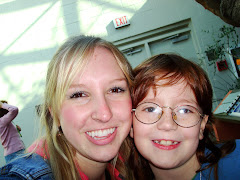
The Three Little Javelinas
Written by Susan Lowell
Illustrated by Jim Harris
Northland Publishing Co, 1992
Picture Book, Traditional Literature 3-5
Summary: This is a southwester adaptation of the familiar folk tale “the three little pigs.” A javelina is a cousin of a pig. They are very hairy with bony legs. One day the three little javelinas trotted away to seek their fortunes. The first javelina decided that he was going to build his house of tumbleweed. When the coyote came, he blew the house away but the javelina escaped! He came to his brother’s home, who had built his house of saguaros ribs which come from giant cactus plants. When coyote came, he huffed and puffed and blew their house down but the two little javelinas escaped into the desert. The third javelina made her house of adobe bricks which are mud and straw. She welcomed her two brothers into her home. When the coyote came, he could not blow the house down. He decided that he would try to get into the house through the stove pipe. The third javelina had lit a fire inside her wood stove. The coyote let out a long howl as he climbed out of the stove pipe. To this day, when you hear a coyote yelping in the desert, he is remembering this incident with the three little javelinas.
Response and Teaching Ideas: I greatly enjoyed this adaptation of the three little pigs. It is very humorous and insightful. I also like how the third javelina who builds a strong, sturdy house is a girl! The encounter with the Native American woman and the Spanish speaking man allows the teacher to discuss these different cultures with her students. The illustrations are also full of detail. The environment of the desert is described and illustrated specifically-such as dust storms, cactuses, intense heat, “palo verde trees with green trunks and yellow flowers,” snakes, hawks, mountains, and coyotes. These are just a few concepts that are introduced to students. The teacher can expand on these descriptions to teach students about climate, animals, and life in the desert.
Students will also enjoy comparing this book to another version of the three little pigs. One example could be comparing it to “The Three Little Rabbits.” These two books follow the same plot but have different characters. The settings are different-one in the desert and the other in the forest. The trickster is also different-one is a coyote and the other is a fox. The animals also build homes out of different materials which came from the environment. Similarities also exist between the two stories. Both stories begin with “once upon a time,” both end happily, both contain a trickster who gets himself into trouble, and both stories are about siblings going out on their own.
Written by Susan Lowell
Illustrated by Jim Harris
Northland Publishing Co, 1992
Picture Book, Traditional Literature 3-5
Summary: This is a southwester adaptation of the familiar folk tale “the three little pigs.” A javelina is a cousin of a pig. They are very hairy with bony legs. One day the three little javelinas trotted away to seek their fortunes. The first javelina decided that he was going to build his house of tumbleweed. When the coyote came, he blew the house away but the javelina escaped! He came to his brother’s home, who had built his house of saguaros ribs which come from giant cactus plants. When coyote came, he huffed and puffed and blew their house down but the two little javelinas escaped into the desert. The third javelina made her house of adobe bricks which are mud and straw. She welcomed her two brothers into her home. When the coyote came, he could not blow the house down. He decided that he would try to get into the house through the stove pipe. The third javelina had lit a fire inside her wood stove. The coyote let out a long howl as he climbed out of the stove pipe. To this day, when you hear a coyote yelping in the desert, he is remembering this incident with the three little javelinas.
Response and Teaching Ideas: I greatly enjoyed this adaptation of the three little pigs. It is very humorous and insightful. I also like how the third javelina who builds a strong, sturdy house is a girl! The encounter with the Native American woman and the Spanish speaking man allows the teacher to discuss these different cultures with her students. The illustrations are also full of detail. The environment of the desert is described and illustrated specifically-such as dust storms, cactuses, intense heat, “palo verde trees with green trunks and yellow flowers,” snakes, hawks, mountains, and coyotes. These are just a few concepts that are introduced to students. The teacher can expand on these descriptions to teach students about climate, animals, and life in the desert.
Students will also enjoy comparing this book to another version of the three little pigs. One example could be comparing it to “The Three Little Rabbits.” These two books follow the same plot but have different characters. The settings are different-one in the desert and the other in the forest. The trickster is also different-one is a coyote and the other is a fox. The animals also build homes out of different materials which came from the environment. Similarities also exist between the two stories. Both stories begin with “once upon a time,” both end happily, both contain a trickster who gets himself into trouble, and both stories are about siblings going out on their own.

No comments:
Post a Comment